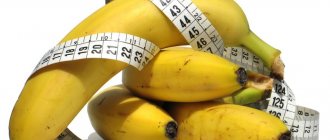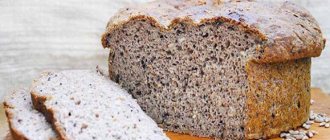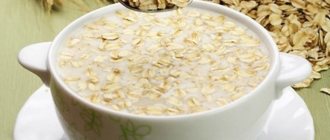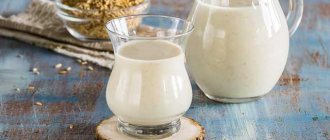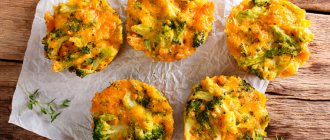Kefir is a healthy fermented milk product that can be found in almost every kitchen.
Adding kefir to baked goods allows you to get a fluffy dough. The drink has unique properties that increase the plasticity of dough for the formation of any bakery products. The product goes well with yeast and soda. In addition, the positive effect of kefir on the functioning of the digestive system has been proven. If you unexpectedly run out of kefir, you can use substitutes. Today we will name several analogues of fermented milk product.
Hercules jelly
You can try making your own rolled oatmeal jelly. This product resembles kefir in its taste and is rich in nutrients. It is well suited for lactose intolerant people who cannot consume dairy products.
To prepare jelly you will need:
- Pour 1 cup of oatmeal with 4 cups of drinking water;
- Add 5 grams of baker's yeast;
- Leave the starter to infuse for 1 day in a warm place;
- Stir the mixture regularly with a spoon.
After the specified time, strain the starter a couple of times through several layers of gauze. Then put the product on the fire and constantly stir with a spoon. When the liquid boils, turn off the heat. Wait for the jelly to cool. It can be used instead of kefir or added to baking.
There may be some leaven left on the surface of the gauze. It can be used to prepare new portions of jelly.
How to make a simple yogurt dough for pancakes?
To prepare a regular dough, you need to use the following proportions of products:
- 400 grams of yogurt;
- 2 eggs;
- 1 tbsp. spoon of sugar;
- a pinch of salt;
- 1 tsp. soda There is no need to extinguish it with vinegar, because there is already enough lactic acid in the main ingredient;
- 2-2.5 cups of flour. Its quantity depends on the quality of the dairy product: curdled milk from skim milk is thinner, while from whole milk it is thicker and similar to yogurt.
To prepare the dough, you need to grind the eggs with sugar and salt, add yogurt and stir until the grains dissolve. Combine the flour with soda and mix it into the milk mixture, stirring constantly with a spoon so that lumps do not form. The consistency of the dough should resemble thick sour cream. Let it sit for 10-15 minutes and then fry the pancakes in the traditional way.
Cucumber pickle
There are conflicting opinions regarding the use of cucumber pickle. The addition of such a liquid gives baked goods a characteristic taste. Therefore, before using the brine, it is recommended to reduce the acid content by adding sugar. Add 10 tablespoons of granulated sugar to 250 milliliters of brine.
Example recipe
If you had to replace kefir in baking with something else during the preparation of pancakes, then the dough recipe will look something like this:
- 300 grams of sour cream;
- 100-150 grams of milk;
- 1 egg;
- 1-2 tbsp. spoons of sugar;
- a pinch of salt and vanillin to flavor the dough;
- 1\2 tsp. soda;
- 1 tbsp. flour.
It is kneaded according to the same principle as sour milk dough: immediately eggs and sugar with salt, then the mass is diluted with milk until the crystals dissolve, and then sour cream is added. And it doesn’t matter whether it’s thick or thin, fresh or if it’s been in the refrigerator for several days, the pancakes still taste great. Sour cream gives them a slightly greater oiliness, unlike regular buttermilk pancakes, so it’s better to use a dry frying pan for frying, although this is not essential. The amount of flour may vary somewhat depending on the presence of gluten in it; when kneading dough in such cases, you need to focus on appearance and experience.
Serum
For baking, you can use whey instead of kefir. The only feature will be the absence of fat. Therefore, the taste of the finished product may change slightly. Many cooks note that whey-based dough does not work well. In addition, the baked goods turn out “fresh.” To add milky taste, pour in a little pre-melted butter.
Thus, you can replace kefir with several simple products. We recommend experimenting to find the right option that suits your culinary preferences.
Pancakes made with other dairy products
But what if there is neither one nor the other? How to replace kefir and yogurt in baking? There is a way out even in this case: you can use sour cream diluted with a small amount of milk or yogurt without additives, then the pancakes will become more like American pancakes, which can be fried in a dry frying pan without oil, which is important for fans of a healthy lifestyle. You can also use fermented baked milk instead of kefir in baking pancakes - it gives them a special, unique taste of baked milk, which makes the dish especially desirable.
Is it possible to replace yogurt with kefir for weight loss?
For a person to have a complete healthy diet, it is necessary to include milk and dairy products in the menu. They cannot be replaced with anything else; they are great for losing weight. But we are not talking about all the products in this series.
This is important for those who like to count calories. Girls who carefully monitor their figure should be more careful with fermented baked milk. This is the fattest product compared to yogurt and kefir.
Curdled milk is completely digestible and suitable for diets. Kefir remains a dietary drink. It cannot match its leadership with other competitors.
Let's look at the composition of the products:
- Kefir. Contains iron, vitamins PP, A, H, B, P, C, D, E, chromium, Ca, iodine, amino acids.
- Ryazhenka. Contains vitamins D, P, C, A, PP, B, K, Na, Ca, Fe.
- Curdled milk. Rich in vitamin C and B, as well as fatty acids.
How to ferment yogurt, fermented baked milk, sour cream?
Photo from Pixabay website
There is constant confusion on the Internet and in the air regarding recommendations on how to ferment yogurt when making it at home. However, this is an important point in determining the benefits of yogurt for your health. So what is the best way to ferment it and why?
Why make your own yogurt?
In an article devoted to the benefits of fermented milk products, I dwelled in detail on the microbiological composition of various products. After all, this is what determines its type, taste, aroma, consistency and benefits specifically for your body. I also noted that probiotics, that is, biologically active fermented milk products, should be supplied to the body constantly and regularly. And this can be achieved by making your own probiotic.
As a result of biochemical processes, fermented milk products are absorbed much easier and faster than regular milk. For example, in 3 hours, milk is absorbed by the body by 44%, and yogurt by 95.5%. This is due to the partial peptonization of milk proteins to obtain easily digestible simple substances. The resulting lactic acid and carbon dioxide cause a more intense release of enzyme juices, which accelerate the absorption of the product with the least amount of energy.
During lactic acid fermentation, the milk sugar lactose is affected by the enzyme lactase, secreted by lactic acid bacteria. At the first stage of fermentation, the lactose molecule is split into two monosaccharide molecules - glucose and galactose. As a result of enzymatic transformations, pyruvic acid is first formed from glucose and galactose, which is then reduced to lactic acid under the action of the enzyme codehydrase.
Under the influence of flavor-forming bacteria, lactose decomposes, forming diacetyl, which gives the product a specific odor. During lactic acid fermentation, 20–25% of all lactose contained in milk is consumed for the formation of lactic acid, diacetyl and other substances. The rest of it enters the human body and is consumed during the life of the lactic acid microflora of the intestine. Thus, fermented milk products are easily processed and well absorbed even by people with lactose intolerance.
How to make your own yogurt?
Making your own yogurts is simple and profitable. For your yogurt you only need milk and starter. Sourdough rich in beneficial bacteria produces a tasty and natural product without dyes, flavors or thickeners. The process takes a minimum of effort and time. Expensive special equipment is not required. A yogurt maker, a slow cooker, an oven, a thermos, and a thermal bag are suitable.
It is important to note that the milk must be pasteurized or sterilized. As a result of pasteurization, microorganisms in milk are destroyed and conditions favorable for the development of starter microflora are created. The best conditions for the development of microorganisms are created if milk is pasteurized at temperatures close to 100 °C. Under these conditions, denaturation of whey proteins occurs, which participate in the construction of the structural network of the curd, and the hydration properties of casein and its ability to form a denser curd that retains whey well are increased. Therefore, raw milk is pasteurized at a temperature of 85-90°C for 5-10 minutes or at 90-92°C for 2-3 minutes. It’s easier to cook with good, already pasteurized or sterilized, whole milk.
Next, the hot milk is cooled to 40°C, the starter is added and left for 6-7 hours until a dense curd forms. Place it in the refrigerator to ripen for several hours and consume it for your health.
So how to ferment yogurt?
Photo from Pixabay website
How to ferment your fermented milk product?
But now we come to the main question - how to ferment your fermented milk product? You need to ferment with what you want to get as a result: yogurt - with yoghurt (containing thermophilic streptococcus and Bulgarian bacillus), plain yogurt - yogurt (containing mesophilic streptococcus), fermented baked milk - fermented baked milk (containing thermophilic streptococcus), kefir - kefir (containing thermophilic streptococcus, kefir grains and bifidobacteria), sour cream - sour cream (containing mesophilic streptococcus and flavor-producing fermented milk bacteria) ... They will give the characteristic taste, aroma, consistency and microbiological component of this fermented milk product, which will determine the benefit for you. That is, by fermenting milk with yogurt, you will get yogurt, not yogurt. And by fermenting cream with yogurt, you will get creamy yogurt, not sour cream. You can also use a commercial dry starter that is specific to the product you want to obtain.
For fermented baked milk and Varenets, you need to ferment baked milk. You can also make it yourself by simmering the milk at a temperature of 95-98°C for 2-3 hours. For sour cream, you need to ferment pasteurized or sterilized cream of the same fat content as the sour cream you want to get. Fresh cream is pasteurized at a temperature of 85 - 95 ° C to destroy microorganisms and inactivate the lipase enzyme. It is recommended to homogenize the cream so that the sour cream has a denser consistency. The cream is fermented with a starter culture in an amount of 3-5%, including mesophilic streptococci and flavor-producing bacteria.
Milk or cream with the starter is placed in a yogurt maker, multicooker, thermos or other device, where a temperature favorable for the development of the starter microflora is maintained. At the same time, for mesophilic races the temperature should be 37-38°C, for thermophilic races - 40-43°C. As a result, casein particles lose stability, aggregate and coagulate, forming a clot.
Having selected the fermented milk product that is right for you, you can prepare and consume it constantly and regularly, thereby improving and maintaining your health. And you can get a starter by leaving one jar of your product for a subsequent series of fermentation, but no more than 2-3 times. Subsequently, the microbiological purity of the starter is reduced due to contamination with wild strains of fermented milk microorganisms from the environment. This inoculation will even improve the biological impact of your product on your health because it will closely match the probiotic that your microbiota is adapted to. But the taste may deteriorate. Still, wild strains do not have the same organoleptic properties that special industrial sourdough has.
So, each specific fermented milk product has its own ferment, characteristic only for it.
What is kefir and its effect on the body
Kefir is a fermented milk product classified as dietary. Its medicinal properties have not yet been fully studied, but it is known that it has a beneficial effect on the gastrointestinal tract and starts digestive processes.
Let's look at a few more positive qualities:
- During extreme heat, it quenches thirst.
- Helps improve cellular metabolism and supply cells with oxygen.
- Among other things, kefir is a source of calcium, which is easily absorbed by the human body.
- Among the positive qualities, it is also worth noting that it perfectly removes toxic substances.
- In case of water retention in the body, this can manifest itself in the form of edema, and copes well with its removal. Kefir owes its urinary effect to potassium, which is part of the composition.
- Its effect as an immunostimulant should not be underestimated.
- Affects the functioning of the cardiovascular system.
- While following a diet, a depressive state often occurs, which he copes with excellently.
You can endlessly list the advantages of kefir, which is good as a dietary product, but it still has disadvantages. For example, if used incorrectly, it can cause gastritis and even gastric ulcers. Therefore, it is not equally suitable for everyone. This raises the question - can kefir be replaced with something else?
What is the difference
Let's figure out the difference between yogurt, kefir and fermented baked milk. Are they all useful? We know that they are used to speed up the digestion process.
These fermented milk products help restore intestinal microflora even after taking antibiotics, which is a huge plus and the reason for their widespread use.
The benefits of lactic acid drinks depend on which area of their action you pay attention to. Let's look at the difference between them and determine what is more suitable for each individual.
The difference between yogurt, fermented baked milk and kefir is quite significant. They differ in taste, color, degree of fat content, consistency and the method of fermentation itself. Kefir is white in color, has a uniform structure and has a sour taste.
Fermentation can be lactic acid or alcoholic. Cow's milk with a low percentage of fat on kefir grains combines several types of microorganisms.
As it matures, the percentage of alcohol increases. Curdled milk is thick sour milk, or deliberately fermented with the help of lactic acid fungi. Its composition is dense with a sour taste and smell.
Ryazhenka is baked milk that is fermented with special fungi. This is a fermented milk drink with a sweetish, delicate taste and creamy tint. Ryazhenka is made from thermally treated baked milk.
There is practically no foreign bacteria left in it. Of the products presented above, fermented baked milk is the best absorbed.
Is it possible to replace kefir with curdled milk?
Basically, kefir takes first place in baking recipes. It gives them lightness and a particularly delicate taste. Pies and muffins become more filling. Is it possible to replace kefir with yogurt if there is none in the refrigerator and you don’t want to go to the store?
What function does kefir perform in dough? When the acid and soda interact, the dough fills with bubbles and the baked goods become fluffy. Curdled milk is also a fermented milk product, therefore, kefir can be replaced with this product.
Some tips
In order to become a professional in the kitchen, it is not necessary to graduate from an academy, because life is not enough to comprehend all the secrets of the culinary art. But at the same time, if you turn to specialists who have already reached the required level for wisdom, you can acquire the necessary ability to adapt almost every recipe to your capabilities. Below are some interesting recommendations from experts in their field:
- When kneading the dough, the fermented milk mixture instead of kefir should be slightly lukewarm, especially if the room is cool, then the reaction of soda with lactic acid will occur better and the dough will become fluffier.
- If a person does not use eggs for food, then the viscosity of the dough can be added to banana puree by mashing the ripe fruit with a fork or blender (ratio: 1 banana per 400 grams of kefir).
- The finished dough should not be too liquid, otherwise during baking the pancakes will become fluffy, but after cooling they will settle, turning into thin cakes. In addition, batters are more prone to absorb fat during heat treatment, which further makes them unattractive to the taste.
From all of the above, one important conclusion can be drawn: if you wish, you can prepare an excellent dish, even with minimal ingredients, the main thing is not to be afraid to experiment and look for new combinations.

